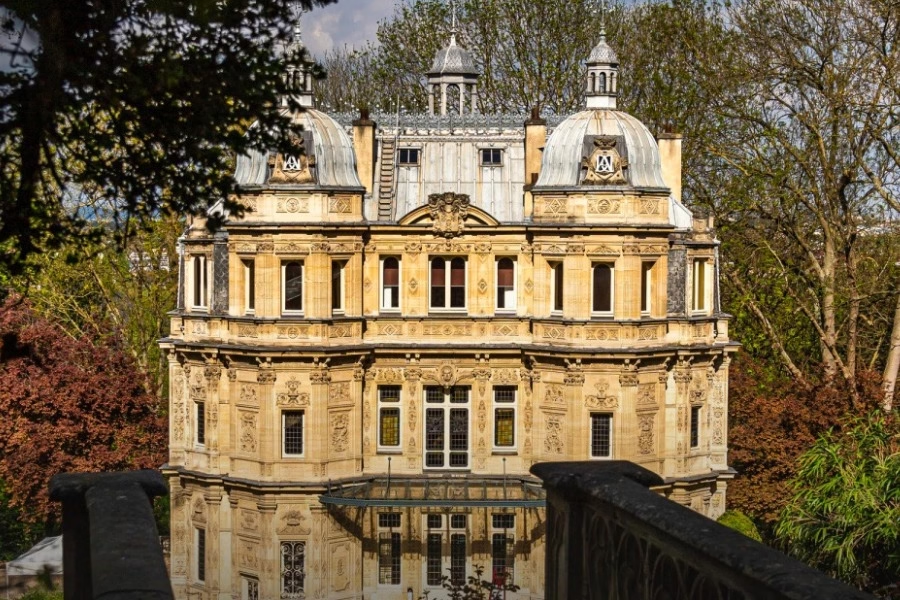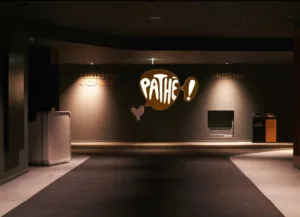Some restore castles for history, King Hassan II did it for literature.
Fez– It’s not every day that a Moroccan monarch steps in to save a crumbling French château. But then again, King Hassan II was no ordinary head of state, and Alexandre Dumas was no ordinary writer.
This is the little-known story of how one of Morocco’s most literary kings helped restore the dream home of one of France’s most legendary authors.
Back in 1844, riding high on the roaring success of The Three Musketeers, Alexandre Dumas decided to turn fantasy into architecture.
With fame (and fortune) in hand, he bought nine lush hectares on the hillside of Port-Marly, west of Paris.
There, with architect Hippolyte Durand, he imagined his own personal Eden: a Renaissance-style château surrounded by an English park, waterfalls, a Gothic pavilion named Château d’If (yes, inspired by The Count of Monte Cristo), and because Dumas was never one to do things halfway, a dazzling Moorish salon on the top floor.
It was extravagant, theatrical, and unmistakably Dumas. But dreams are expensive to maintain.
Just five years after the first stone was laid, the writer’s financial troubles caught up with him.
By 1849, he was forced to sell the estate. Fast forward to the 1960s, and the place was in complete disrepair: roofs caved in, walls rotting, and nature creeping in like an unwelcome guest.
By the 1970s, plans were even underway to tear it all down and build apartments. Thankfully, a passionate group known as Les Amis d’Alexandre Dumas said: “absolument pas”.
With support from local mayors, they launched a campaign to save the site and created a syndicate that officially acquired the property in 1972.
But saving a château requires more than signatures and sentiment, it takes serious money. Enter: King Hassan II of Morocco.
A known admirer of Dumas, the king reportedly owned the author’s complete works at his palace in Rabat.
When he heard of the restoration efforts, he didn’t just send a polite cheque, he joined the association.
And when one joins a literary society, he famously said, one must pay their dues. His? Restoring the Moorish salon.
And not just with funds. Between 1985 and 1986, Moroccan artisans, true masters of zellige, plaster carving, and woodwork, were sent to breathe life back into the space.
Inspired by Andalusian architecture, they transformed the room into a visual poem: intricately carved plaster ceilings, inlaid mosaic floors of Fassi zellige and marble, and coffered ceilings echoing the Alhambra.
The parquet floor was replaced with something far more dazzling. Moroccan heritage now lives on, quietly glowing inside a French château.
The story gets even better. According to “Le Parisien”, when the marble tiles arrived in crates, one well-meaning French guard panicked, thinking they were broken.
“It’s terrible,” he cried. “Everything’s shattered!” Of course, they weren’t. Moroccan artisans don’t make mistakes, they make art.
King Hassan II didn’t just stop at one room. He funded heating systems, helped restore the first floor, and even had the original salon fabrics recreated in Lyon.
He personally came to inaugurate the Moorish salon himself. That’s how much it mattered.
So next time someone tells you that kings and writers live in different worlds, remind them of this unlikely alliance: a French literary giant, a Moroccan sovereign, and a château that now stands not just as a monument to imagination, but as proof that cultural bridges can be built, tile by tile, across time and continents.
Read also: Hollywood’s Cleanest Scandal: Sydney Sweeney’s Bathwater Soap
















